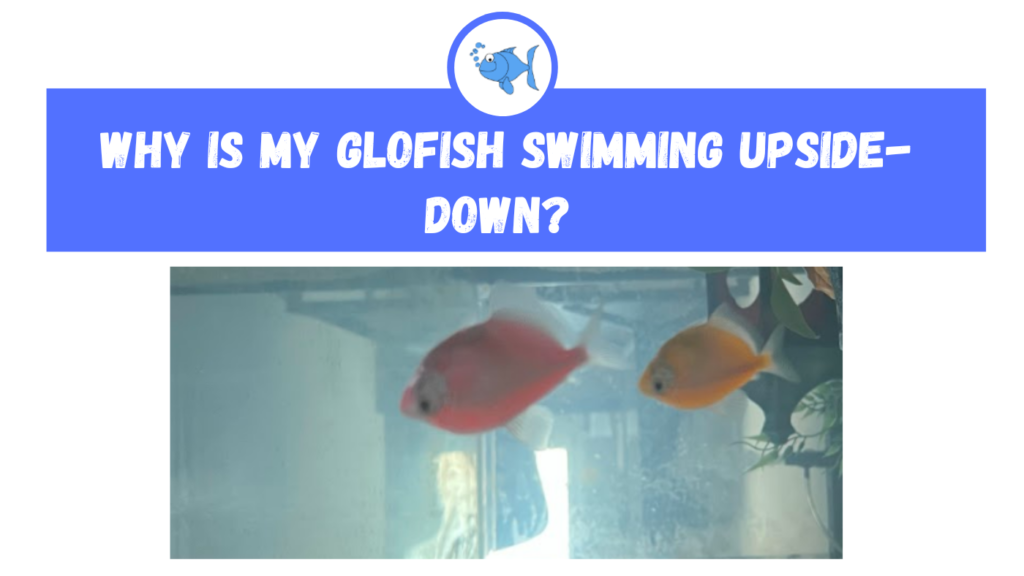If you notice that your glofish are swimming upside-down, it is very critical that you understand what is happening so that you can get it the help it needs. Unfortunately, a glofish swimming upside-down is typically indicative of swim bladder disease. The good news is, swim bladder disease can be fixed without having serious ramifications on your fish.
However, it is important to be able to identify it and treat it as soon as possible. In this article, we’ll discuss how swimming upside-down relates to swim bladder disease in glofish. We’ll also explore the causes and treatments for swim bladder disease.
Why is My Glofish Swimming Upside-Down?
The main reasons your glofish is swimming upside down is because they have swim bladder disease. However, they might also just be chasing each other.
Swim Bladder Disease
Swim bladder disease means that your fish’s bladder is not functioning properly. It is a very common illness amongst fish, and it is most often diagnosed based on upside-down swimming. When your glofish has swim bladder disease, their bladder is not able to regulate itself normally due to too much air being trapped inside.
This excess air impairs your glofish’s ability to swim properly which will lead them to swim sideways or upside-down. Since it is very common, it is relatively easy to treat. However, if it is not treated quickly enough, it can turn into a very serious illness. So, it’s important to understand how to swim bladder disease is caused so that you can quickly devise a solution.
Causes of Swim Bladder Disease
Swim bladder disease can be caused by a variety of different factors. Constipation is one of the most common factors of swim bladder disease. When an excess amount of feces is in your glofish’s system, it can press up against the bladder.
Constipation may be caused by excessive feeding. The type of food you are feeding your glofish can also have an impact. If your fish are not about to properly digest the food, they may be more at risk of developing swim bladder disease.
The tank itself and how it is regulated may also be responsible for swim bladder disease. If your tank is not properly cycling and maintaining a proper temperature, your fish may react negatively and develop swim bladder disease. A drop in temperature is a very common cause of swim bladder disease.
Bacterial or parasitic infections could also be responsible for swim bladder disease. In these cases, swim bladder disease is a symptom of a bigger issue, and you’ll need to treat the bacterial or parasitic infection.
Treatment of Swim Bladder Disease
Luckily, swim bladder disease is not too difficult to treat. If left untreated, it can be very serious and even result in the death of your fish. So, it is incredibly important to treat it as soon as possible.
Learn More: How to tell if your glofish is dying?
You should get a test kit to test the water of your fish’s aquarium to ensure that it is properly cycled and well-maintained. If there are no issues with the tank, move on to the food. Try feeding your glofish deshelled peas in very, very small amounts.
Make sure the peas are not too big for your glofish so they don’t cause further digestive issues. Additionally, make sure that you are not overfeeding your glofish. If you’re not seeing any results after checking the tank and adjusting the food, it is time to take your glofish to the veterinarian.
Your veterinarian will be able to provide more specific and individual advice and may suggest different kinds of antibiotic treatments.
Your glofish might just be having fun
While swim bladder disease is the main reason your glofish is swimming upside down, there is a chance they are just chasing each other. Glofish are extremely fast, and when one is chasing another, it could cause them to temporarily swim upside down.
However, if you do notice that there is one glofish that repeatedly chases another one, you might want to temporarily separate them. You should definitely do this if you notice your glofish attacking each other.
Lastly, your glofish might be swimming upside down if they ate something large, such as goldfish food.
Final Thoughts
Seeing your beloved glofish swimming upside-down can be a very concerning sight. As we’ve discussed in this article, swimming upside-down is almost always indicative of a case of swim bladder disease.
Because swim bladder disease means that your glofish’s bladder has too much air in it, it isn’t able to properly balance itself and exhibit its usual buoyancy techniques. So, they’ll be swimming sideways or upside-down unintentionally. Swim bladder disease, if left untreated, can be a very serious condition.
It is important to understand what swim bladder disease is as well as how to treat it so that you can get your glofish swimming upright again. It is always a good idea to visit your local veterinarian to get professional advice, especially if at-home methods are not showing any results.
